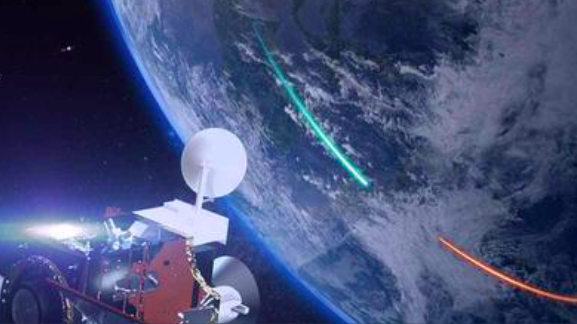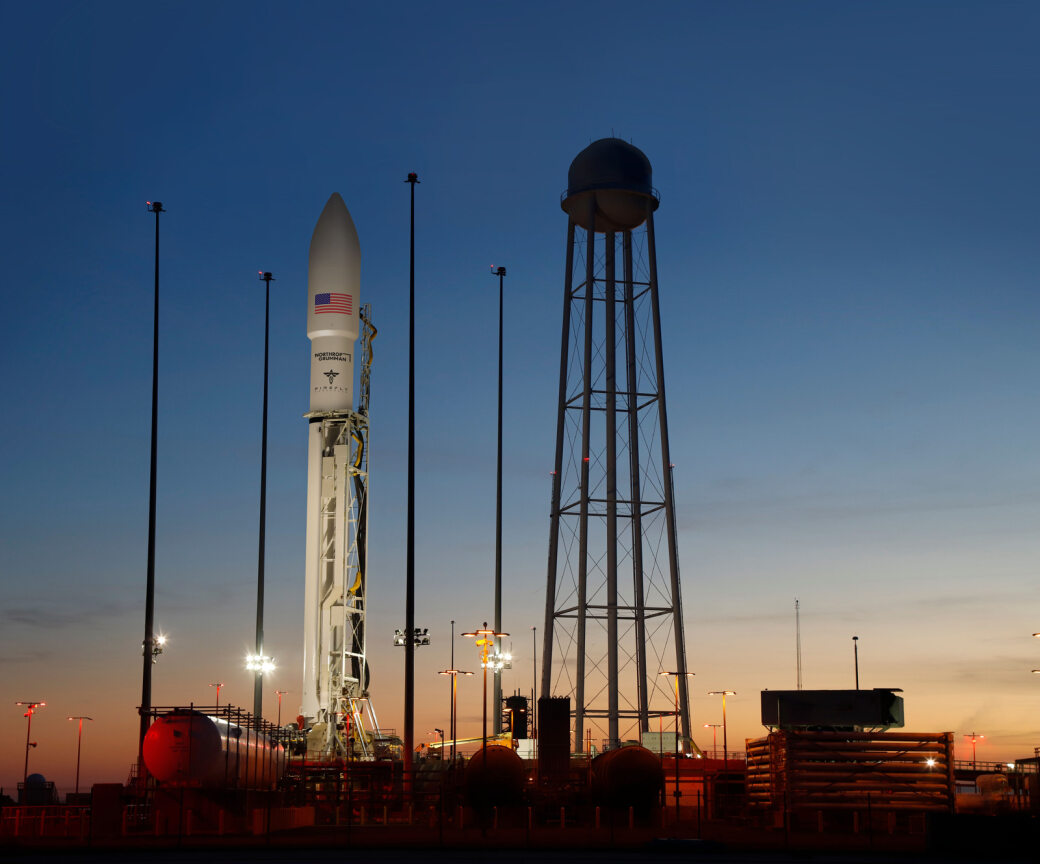
Space Development Agency Tracking Layer satellites will keep eyes on both ballistic and hypersonic missiles from low Earth orbit. (Graphic: L3Harris)
WASHINGTON — The Space Force’s Space Development Agency is soliciting industry proposals for a next set of satellites in low Earth orbit to track ballistic and hypersonic missile launched from anywhere around the world — satellites that will include new “fire control” sensors that will provide commanders with pinpoint coordinates to target those incoming missiles.
The Tranche 2 Tracking Layer “will accelerate the capability to provide global, persistent indications, detection, warning, tracking, and identification of conventional and advanced missile threats, including hypersonic missile systems. The T2 Tracking Layer will also demonstrate a missile defense capability by incorporating fire control quality sensors into the constellation,” SDA said in a LinkedIn post today.
“SDA plans to purchase and deploy an anticipated minimum of 54 space vehicles with infrared (IR) sensors in six orbital planes from up to three vendors,” it added.
Under the solicitation released on the SAM.gov website yesterday, interested vendors have until Oct. 5 to pitch their prototypes in hopes of winning one of the Other Transaction Authority contracts. “The first plane of the T2 Tracking Layer constellation will be launched no later than 30 April 2027 with the launches of subsequent planes expected to follow on one-month intervals,” the solicitation said.
The T2 Tracking Layer constellation will orbit at an altitude of about 1,000 kilometers, the solicitation explains, and ultimately will comprise more than 100 satellites — deployed in six orbital planes with nine birds in each plane.
The T2 satellites will join the eight planned Tranche 0 Tracking Layer demonstration satellites — two launched in April, two more launched Sept. 2, and the four expected to launch later this year — and the 14 Tranche 1 Tracking Layer birds expected to launch later this year to provide regional coverage. (13 Tranche 0 sats were launched on Sept. 2 but only two were Tracking Layer, with the other 11 supporting the Transport Layer.)
Each T2 Tracking Layer satellite will carry an IR payload to detect and track missiles using their heat signatures, optical communications terminals to connect the satellites to each other and to SDA’s Transport Layer of data relay birds, and Ka-band and S-band communications payloads. Some will also be equipped with a “directed energy sensor,” a sign SDA is at least planning for potential laser-interference attempts against their systems.
The Transport Layer is being designed as the space node of the Defense Department’s overarching Joint All Domain Command and Control (JADC2) concept for linking all military sensors to “shooters” — on land, it the air, at sea, in space and through cyberspace — to ensure rapid response in tomorrow’s light-speed conflicts.
More specifically, the solicitation says that each plane of nine T2 satellites will include eight equipped with wide field-of-view IR payloads “to achieve near-continuous global stereoscopic coverage” for missile warning/tracking.
“The ninth SV [space vehicle] in each plane will be equipped with an IR mission payload capable of generating fire control quality tracks for Missile Defense. This system includes on-orbit calibration capability, on-board processing of Tracking data, and minimization of solar outages,” the solicitation adds.
However, the exact specifications for the fire control sensors have been designated as “controlled unclassified information,” and thus are only available to qualified companies.
The T2 plan for fire control sensors comes in the wake of a separate, top-secret effort to flesh out the possibility of a separate constellation optimized for targeting hypersonic missiles, called the “Fire-Control On Orbit-Support-To-The-War Fighter (FOO Fighter or F2)” program. In addition, SDA intends to include medium field-of-view IR sensors for fire control purposes on four of its 28 planned Tranche 1 Tracking Layer satellites, the first of which will launch sometime later this year.
Those plans already have raised eyebrows among lawmakers, including Rep. Doug Lamborn, R-Colo., chairman of the House Armed Services strategic forces subcommittee, who are concerned about how SDA’s Tracking Layer satellites will integrate with the interceptors developed by the Missile Defense Agency, as well as its command, control and communications network.












